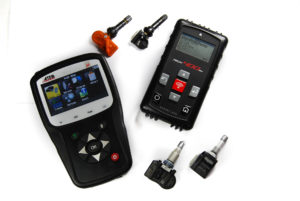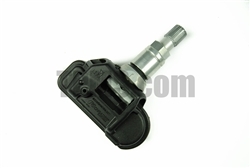| Huf Intellisens – Ford Lincoln Mazda Mercury TPMS sensor set with Ford trigger TPMS-19 8C2Z-1A203-A |
||||||||||||||||||||||||||||||||
|
https://www.tpms.com/ProductDetails.asp?ProductCode=UVS0315.trigger
|
|||||||||||||||||||||||||||||||
| Qty: |
|
Check out more specials at www.tpms.com
| Huf Intellisens – Ford Lincoln Mazda Mercury TPMS sensor set with Ford trigger TPMS-19 8C2Z-1A203-A |
||||||||||||||||||||||||||||||||
|
https://www.tpms.com/ProductDetails.asp?ProductCode=UVS0315.trigger
|
|||||||||||||||||||||||||||||||
| Qty: |
|
Check out more specials at www.tpms.com
Do you need help resetting or relearning a new set of TPMS sensors on a vehicle.
Check out www.tpmsrelearn.com
There you will find a complete listing of TPMS relearn procedures for all makes and models. Automobile manufacturers have made many changes to the process’ used to pair new sensors to a vehicle. If you have any specific questions you can post them at www.thetpmsforum.com The TPMS forum is the most comprehensive discussion of Tire Pressure Monitoring Sensors on the Web.
Is your shop ready for TPMS?
Do you have the basic tools and supplies needed to service customers vehicles same day?
If not contact us, ShopTPMS! www.shoptpms.com
We are the most complete source for all your TPMS needs. Over 40,000 parts in stock everyday. Sensor from Schrader, VDO, Huf, TRW, and Pacific. We cover EVERY make and model EVERYDAY! We have a knowledgeable customer service team that can walk you thru part numbers and relearn process’. Give us a call or email 714-692-TPMS (8767) email sales@shoptpms.com

Information provided by Mitchell 1
Facebook Twitter Google+ Mail
Posted on May 16, 2016
SUBJECT VEHICLES: Mercedes-Benz M Class vehicles including 2007-2009 ML320, 2006-2011 ML350, 2007-2011 ML450, 2006-2011 ML500, 2007-2011 ML550 and 2007-2011 ML63.
RELEARN PROCEDURE? Yes.
SPECIAL TOOLS NEEDED? Yes. Assembly tool (M-B# 124589176300).
The tire pressure monitoring system (TPMS) monitors the tire inflation pressure (as selected by the driver) in the four road tires of the Mercedes-Benz M Class subject vehicles. To perform this function, the system uses an electronic tire pressure sensor in each wheel, and a low tire pressure warning light on the instrument cluster.
The wheel sensor is mounted on the metal valve (not visible from outside), and measures the air pressure and temperature inside the tire.
Figure 1: Locating the TPMS reset switch (typical).
Figure 1: Locating the TPMS reset switch (typical).
Tire pressure monitor warning indicators
If the warning light is on and the multifunction display shows a message, immediately check air pressure of all tires and adjust to the specified pressure. Reactivate the TPMS. Drive the vehicle for a few minutes to ensure the malfunction has been corrected. If the warning light stays on or flashes, there is a malfunction in the TPMS. See the appropriate manufacturer service information. The warning light will illuminate in the following ways to indicate a low tire pressure condition or a malfunction in the TPMS:
If the warning light is on continuously, one or more of the tires is significantly under-inflated. There is no problem in the TPMS.
If the warning light flashes for 60 seconds and then stays illuminated, there is a problem in the TPMS. This sequence will continue upon subsequent vehicle start-ups as long as the malfunction exists.
NOTE: If a condition causing the TPMS to malfunction develops, it may take up to 10 minutes for the system to signal a malfunction using the warning light flashing and illumination sequence.
Reset procedures
NOTE: Whenever tire pressure has been adjusted, or when wheels or tires have been replaced, the TPMS must be activated.
NOTE: In the event of air pressure changes, wheel replacement or tire change, new air pressure values in the TPMS are detected automatically by filling detection after a 10-minute drive. Manual reactivation is merely planned as a solution if automatic filling detection fails.
If the warning light is on and the multifunction display shows a message, immediately check air pressure of all tires and adjust to the specified pressure. Reactivate the TPMS. Drive the vehicle for a few minutes to ensure the malfunction has been corrected.
Tire pressure monitor system reactivation
CAUTION: The warning system can only operate in a reliable manner if correct tire pressures are set. If an incorrect tire inflation pressure is set, the system will monitor the pressure according to the incorrect value.
NOTE: In the event of air pressure changes by the driver, or in the event of a wheel replacement or a tire change, new air pressure values in the TPMS (RDK) control unit are detected automatically by filling detection. Manual reactivation is merely planned as a stopgap solution if automatic filling detection fails.
1) Turn the ignition switch to the OFF position.
2) Ensure the inflation pressure of all four tires is set to specification.
3) Turn the ignition switch to the ON position (or SmartKey position 2). The standard display menu will appear in multifunction display on the instrument cluster (temperature and trip odometer).
4) Press the menu scroll forward or back button (up/down arrows, located on the left side of the multifunction steering wheel) until the TPMS menu is displayed.
5) Press the TPMS reset button on the instrument cluster (see Figure 1). The display will change to the selection screen with “No” preselected. NOTE: Pressing any other button here will cause the activation sequence to be aborted.
6) Press the “+” button to select “Yes.” The selection screen with selection “Yes” appears for approximately two seconds. Then a confirmation message will be displayed.
7) After about 10 minutes driving time the current tire pressures are displayed. The activation process is complete.
Demounting/mounting procedures
Use the following information to avoid damage during the demounting/mounting procedures.
Tire pressure sensor
NOTE: The nut, seal and washer must be replaced if the sensor is removed. Removal of the sensor retaining nut must be regarded as sensor removal.
NOTE: The valve cap must always be in place except when inflating, releasing pressure or checking pressure.
Removal
1) Raise the vehicle on a suitable support. Remove the tire/wheel assembly from the vehicle. Place it on a tire changer.
2) Detach the jammed balance weight with assembly tool (M-B# 124589176300).
3) Remove the bonded balance weight with the tool. Do not use a hard, pointed or sharp-edged removal object.
4) Remove the valve cap. Remove the valve element from the valve.
NOTE: Do not position the bead breaker shovel on the inside or outside of the tire in the area of the valve, otherwise the tire pressure sensor will be damaged.
5) Position the press-off blade of the tire mounting device on the tire bead flank opposite the valve. Press the inner and outer bead flank over the safety bead seats and into the drop center of the disk wheel.
6) Fasten the disk wheel on the tire mounting device. Apply mounting paste to the disk wheel flange and tire beads.
7) Position the disk wheel so that the valve is 4.0 in. (10 cm) behind the assembly head, viewed in the direction of rotation (arrow) of the disk wheel. Align the mounting head close to the disk wheel.
8) Use an assembly lever to lever the tire beads over the mounting lug of the mounting head and detach the tire from the disk wheel.
Figure 2: Tire pressure sensor expanded view.
Figure 2: Tire pressure sensor expanded view.
9) Unscrew the union nut with the friction disk from the valve body (see Figure 2).
10) Remove the tire pressure sensor along with the valve body from the wheel.
11) Remove the seal and support the ring from the valve body.
NOTE: If reusing the tire pressure sensor, clean and inspect the tire pressure sensor for visible damages. If damages are detected, replace the tire pressure sensor.
12) Clean the tire pressure sensor and the valve bore.
Installation
NOTE: Do not reuse a TPMS sensor with visible damage or with a date code indicating it is more than seven years old.
1) Remove the identification label from the tire pressure sensor. Place it in the owner’s maintenance booklet, if available.
2) Replace the bolt, valve body and union nut with a friction disk. Insert the square of the bolt in the guide on the TPMS wheel sensor and screw it onto the valve body for approximately three revolutions.
3) Fold the valve body downward (see Figure 2).
4) Insert the valve assembly in the valve bore.
NOTE: Do not, under any circumstances, counter-hold the valve body (see #3 in Figure 2) when tightening the union nut (2) This will cause the TPMS wheel sensor (A69/1 to A69/5) to be damaged when driving.
NOTE: When tightening the union nut (2), press the TPMS wheel sensor (A69/1 to A69/5) slightly into the drop center and toward the valve bore of the disk wheel.
5) Tighten the union nut with a friction disk.
6) Apply mounting paste to the disk wheel flanges and tire beads of the new tire. Position the disk wheel on the tire mounting device with the valve opposite (180 degrees from) the mounting head.
7) Place the new tire at an angle on the disk wheel and align the mounting head close to the disk wheel.
8) Pull the tire onto the disk wheel with the tire mounting device.
9) Align the match points of the tire and disk wheel relative to one another.
10) Remove the disc wheel with the tire from the tire mounting device and remove the valve element from the valve.
NOTE: If the beads fail to seat properly, deflate, apply mounting paste to the tire beads and repeat the process.
11) Inflate the tires to the maximum of 43.5 psi (3 bar) to seat the beads on the disk wheel.
12) Turn the valve element into the valve and adjust tire inflation pressure to the correct pressure.
13) Balance and reinstall the wheel on the vehicle.
14) Reset the TPMS. See reset procedures. ■
Mercedes Benz TPMS sensor A0009050030 0009050030 by Schrader. Most of the new Mercedes are using this adjustable angle, high speed sensor. Smaller size and lighter weight make it a preferred design.
Fitment
Mercedes-Benz; B200; 2014
Mercedes-Benz; B200; 2015-2016
Mercedes-Benz; B250; 2015
Mercedes-Benz; B250; 2016
Mercedes-Benz; C Series; 2014-2015
Mercedes-Benz; C Series; 2016
Mercedes-Benz; C250; 2014-2016
Mercedes-Benz; CLA250; 2014-2016
Mercedes-Benz; CLA45 AMG; 2014-2016
Mercedes-Benz; CLS550; 2014-2016
Mercedes-Benz; CLS63 AMG S; 2014-2016
Mercedes-Benz; E250; 2014-2016
Mercedes-Benz; E350; 2014-2016
Mercedes-Benz; E400; 2014-2016
Mercedes-Benz; E550; 2014-2016
Mercedes-Benz; E63 AMG; 2014-2016
Mercedes-Benz; E63 AMG S; 2014-2016
Mercedes-Benz; G550; 2014-2016
Mercedes-Benz; G63 AMG; 2014-2016
Mercedes-Benz; GL; 2014-2016
Mercedes-Benz; GL350; 2014-2015
Mercedes-Benz; GL350; 2016
Mercedes-Benz; GL63 AMG; 2014-2016
Mercedes-Benz; GLK250; 2014-2016
Mercedes-Benz; GLK350; 2014-2016
Mercedes-Benz; ML350; 2015
Mercedes-Benz; ML350; 2016
Mercedes-Benz; ML550; 2015-2016
Mercedes-Benz; ML63 AMG; 2014-2016
Mercedes-Benz; S Series; 2013
Mercedes-Benz; S Series; 2014-2016
Mercedes-Benz; S550; 2014-2016
Mercedes-Benz; S600; 2014-2016
Mercedes-Benz; S63 AMG; 2014-2016
Mercedes-Benz; SL550; 2014-2016
Mercedes-Benz; SL63 AMG; 2014-2015
Mercedes-Benz; SL63 AMG; 2016
Mercedes-Benz; SL65 AMG; 2014-2016
Mercedes-Benz; SLK250; 2014-2016
Mercedes-Benz; SLK350; 2014-2016
Mercedes-Benz; SLK55 AMG; 2014
Mercedes-Benz; SLK55 AMG; 2015-2016
Mercedes-Benz; SLS AMG; 2014-2015
Mercedes-Benz; Sprinter 2500; 2014-2016
Mercedes-Benz; Sprinter 3500; 2014-2016

https://www.tpms.com/Mercedes_Benz_TPMS_sensor_A0009050030_0009050030_p/s0213.htm
Source: TPMS Forum
Source: TPMS Forum
Source: TPMS Forum
Source: TPMS Forum
Source: TPMS Forum
{$excerpt:n}